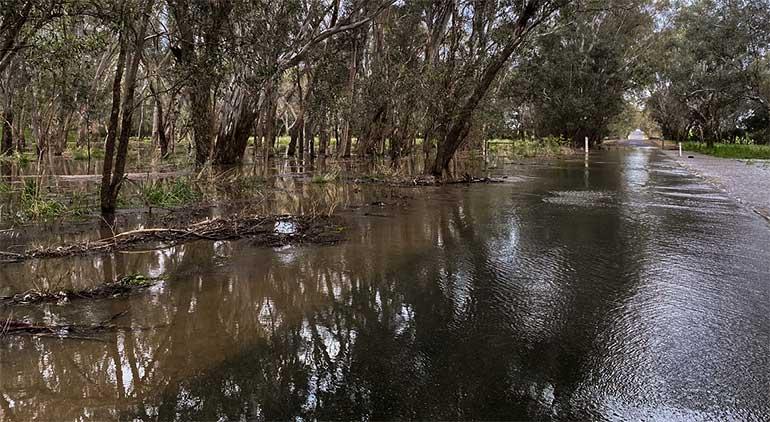The Murray–Darling Basin continues to be in the grip of unprecedented flooding and record river flows. As one community begins the task of cleaning-up, another community is placed on high alert as river levels rise to new peaks. Many thousands of people have been encouraged to evacuated.
The Murray–Darling Basin Authority’s responsibility is to run the River Murray on behalf of the Basin states, and our priority during the flood emergency is to keep the Hume and Dartmouth Dams safe – capturing and storing water and mitigating the flooding where possible. River operators are carefully monitoring conditions and are making operational decisions based on inflows and the latest weather forecasts.
Andrew Reynolds, the MDBA’s Executive Director, River Management, recently joined ABC Melbourne’s Conversation Hour to discuss the current flooding in Victoria. He told the presenters that with the unparalleled level of water moving through the system, it’s a significant challenge to predict when and where peaks will occur.
When we get floods like this, with so many large flows coming in from other tributaries, it all converges on the Murray and will eventually make its way through South Australia and out to the Southern Ocean.
The Murray is a large river but it’s very slow moving, and so this water will take weeks and weeks to push its way down the system. The timing of when the different peaks come out of the different rivers is very hard to forecast.
We’ve had months of wet weather – I’m sure that’s not news to anyone. The Dartmouth Dam, which holds 4,000 gigalitres, is full and spilling now. Hume Dam, which is nearly as big, is sitting at about 94% and we’re still having to release water from Hume to make sure we can manage the storage.
With that air space we have at Hume, and with further rain forecast, we anticipate we’ll be able to limit how much more flooding comes from further upstream. We can’t prevent it completely, but we can certainly make a difference to it – but the system all the way through is full.
Andrew explained the flooding will deliver positive benefits for the Basin’s environment.
Regions such as the Barmah-Millewa Forest and river red gum forests will benefit. It’s important from an ecological point of view that water gets out onto flood plains – that it provides for fish to go out onto flood plains and into wetlands to feed and breed, and for a lot of the nutrients to come back into the river which spurs all the little organisms that live in the river to breed and grow, which provides food for fish and the like. But the environmental benefits do not detract from the massive impacts the floods have on communities that have developed along the river.

Floodwaters of this magnitude may also create water quality issues like blackwater, and there are reports of crayfish leaving the water and some fish deaths.
Social media users have been documenting the situation, including Murray Mallee journo Peter Bannan:
Our next issue is prized Murray cray fish struggling for oxygen. Everywhere along the bank in Swan Hill. @MD_Basin_Auth @VicFisheries pic.twitter.com/fRzoxbaIFF
— Peter Bannan (@PeterBannan5) October 25, 2022
Andrew responded to eyewitness accounts of the river flowing ‘backwards’ at Barmah because of the enormous volumes of water in the system.
I have heard reports of it, and it’s not that surprising. If the water coming out of the Goulburn and Campapse Rivers is higher than the water in the Murray, then it will push back upstream for a way until it levels out, and then of course that pushes water into the Edward River and out towards Deniliquin and other places. When the flow of the Goulburn and Campapse starts to recede, the water will start to flow back downstream and flow into the normal course of the Murray down to South Australia.
Andrew explained to the ABC presenters the flooding we’re currently seeing in the Echuca region will take several weeks to make its way through the system and down through South Australia to the Murray Mouth.
As they go through the system, the peak will progressively move downstream. With La Niña persisting, it really does depend on how much more rain we get. We certainly hope we don’t get such significant intense rainfall that generates floods like we are seeing now, but I do expect the river will run quite high – not to the levels we are seeing at the moment – for many weeks to come.
If you live in a flood-impacted area of the Basin, please contact your state’s SES for more information. For communities in New South Wales, visit www.ses.nsw.gov.au, and if you’re in Victoria, visit www.ses.vic.gov.au/get-ready. South Australians living in river communities should visit www.ses.sa.gov.au
Check the Bureau of Meteorology for the latest weather and rainfall forecasts and flood information.